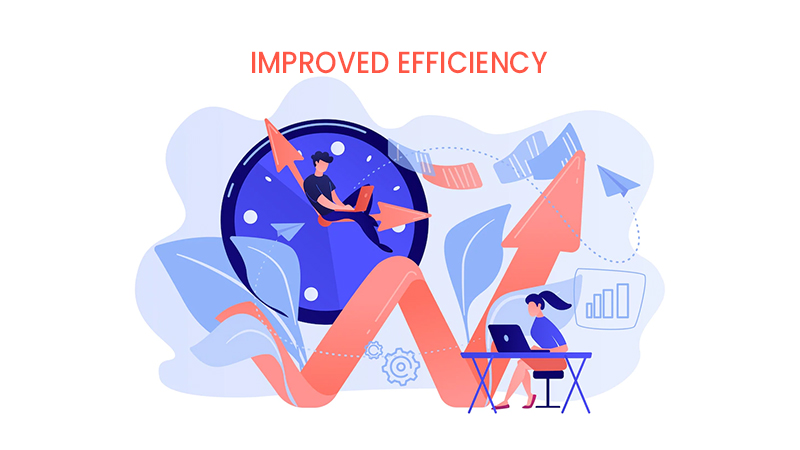Since the last decade, web application have significantly altered the internet landscape for businesses. With the internet being ubiquitous in almost every workplace around the world, web applications have grown in importance as a business tool, with the most common uses being communication with customers, collaboration with employees, secure data storage, and providing data and information to management.
What is a web-based application?
A web-based application is one that uses the website as its interface (the ‘front-end’). Instead of using an application installed on a stand-alone computer, users can access the application from any computer connected to the Internet or Intranet. One of the best examples of a common web-based application that performs the same functions as a traditional desktop application is Gmail.
Web applications are computer programs that perform tasks via a web browser. The technology emerged during the Software as a Service (SaaS) movement, when cloud-based software services surpassed locally installed apps.

Web application development has two components: client-side scripting and server-side scripting. Client-side scripting is concerned with code that is intended to be read and executed by the browser. It runs tasks on the server while using the web browser as a host. On the frontend, HTML, CSS, and Javascript are used to ensure that all browsers can access the web app’s features.
Server-side scripting, on the other hand, is the process of writing code that routes user requests to the server. Backend functions include response generation, database lookups, and web app restructuring. It also serves as a link to the application’s client-facing side. For server-side scripting, web developers use programming languages such as PHP, Ruby on Rails, and Python.
Why is the technology hyped up?
Web applications have a lot to offer in terms of helping businesses grow. Web apps’ various functionalities make them indispensable tools for communicating and delighting customers, improving employee collaboration, organizing data, and more. Among them are the following:
Improved Efficiency
Having multiple versions of spreadsheets or shuffling around piles of paperwork is not only inefficient, but it can also expose your company to human errors that are not easily detected until it is too late. Furthermore, due to the lack of integration between these multiple sources of data, time-consuming and laborious data replication may be required to obtain a comprehensive view of business performance.

Web applications aid in the automation of business processes, allowing you to complete more tasks in less time and with greater accuracy. Furthermore, having all of your data in one place gives you greater visibility into your business, freeing up staff time and allowing you to run real-time reports.
Highly Accessible
Since web applications create business systems that are web-based, they can be accessed at any time as long as you have an internet connection. Furthermore, they are completely adaptable, allowing access from almost any device or browser.

When desktop software needs to be updated, each device on which the application is installed must be updated individually. This task is usually assigned to employees, who may disregard it if they are pressed for time, leaving your company vulnerable to security breaches.
When compared to a web-based application, a security or functionality update can be rolled out to all versions of the web application with zero downtime, providing users with instant access to the updated version of the app.
Stringent Security
With desktop-based software, a stolen or damaged computer can be an expensive and time-consuming situation, putting your data at risk and necessitating a call to your software provider to have the software re-installed on a new device. With a web-based application where the data is stored in the cloud, you can rest assured that if your computer equipment is damaged or stolen, you can quickly resume your business as usual.

This is due to the fact that web applications store information on remote servers, so as long as you know your URL, username, and password, you can securely log-in to any computer or mobile device connected to the internet and have your business up and running again in no time. Finally, if data is lost due to human or program error, it can be quickly restored from the cloud.
Effortless Customizing and Scalable
One of the most common issues we encounter with off-the-shelf software is that it cannot grow or integrate with their business, at least not without costly upgrades. A custom web application is completely flexible and scalable to your business’s demands and growth because it is created specifically for your needs.

The application can be customized with your own branding and different user permission levels. By having only features and functions that are relevant to your business, you will reduce training time and be able to add functionality as your company grows.
Easy Deployment and Maintenance
You avoid the hassle and memory consumption of installing software on every device by using a web application. Web applications are also less taxing on older or low-spec devices. Since every PC has a browser, installation is extremely quick and can run in the background while employees do other things. Maintenance requirements are generally much lower, with updates and patches being pushed to every device remotely.

The Web of Web-based Applications
Static Web Applications
![]() Any web application that can be delivered directly to an end user’s browser without any server-side alteration of the HTML, CSS, or JavaScript content is referred to as a static web application. While this can include very flat, unchanging sites like a corporate website, static web applications generally refer to rich sites that deliver dynamic content using technologies in the browser rather than on the server.
Any web application that can be delivered directly to an end user’s browser without any server-side alteration of the HTML, CSS, or JavaScript content is referred to as a static web application. While this can include very flat, unchanging sites like a corporate website, static web applications generally refer to rich sites that deliver dynamic content using technologies in the browser rather than on the server.
Dynamic Web Applications
![]() Any dynamic web app is built on a framework, which is web app software that controls web page construction and makes maintenance easier. The appearance of such web apps on a user’s screen is not predetermined, but rather dynamically shaped by app logic implemented on the server or client side of the app. Dynamic web apps work differently, and their use cases dictate their development approach and architecture.
Any dynamic web app is built on a framework, which is web app software that controls web page construction and makes maintenance easier. The appearance of such web apps on a user’s screen is not predetermined, but rather dynamically shaped by app logic implemented on the server or client side of the app. Dynamic web apps work differently, and their use cases dictate their development approach and architecture.
Single Page Applications
![]() An SPA (Single-page application) is a web app implementation that loads only one web document and then updates its body content. This allows users to use websites without having to load entire new pages from the server, which can result in performance gains and a more dynamic experience, with some drawbacks such as SEO, more effort required to maintain state, implement navigation, and perform meaningful performance monitoring.
An SPA (Single-page application) is a web app implementation that loads only one web document and then updates its body content. This allows users to use websites without having to load entire new pages from the server, which can result in performance gains and a more dynamic experience, with some drawbacks such as SEO, more effort required to maintain state, implement navigation, and perform meaningful performance monitoring.
Multiple Page Applications
![]() The logic in multi-page web apps is almost entirely on the backend. This means that for any change to take effect, all client-side requests must be routed to the server and back. Aside from the use of a framework, this principle was nearly identical to previous static web apps. Furthermore, because the logic is inaccessible to the user, MPAs are widely used for web portals and enterprise web apps.
The logic in multi-page web apps is almost entirely on the backend. This means that for any change to take effect, all client-side requests must be routed to the server and back. Aside from the use of a framework, this principle was nearly identical to previous static web apps. Furthermore, because the logic is inaccessible to the user, MPAs are widely used for web portals and enterprise web apps.
Animated Web Applications
![]() An animated web app is a web application that supports animation and synchronization on the web platform. HTML5, JavaScript, CSS, FLASH, and SVG are typically the best solutions for creating animated web apps. They can be small web animations that occur as a visitor scrolls through a web page to draw attention to an element, an animation that demonstrates a product, or a promotional web animation that shows off something in an entertaining and engaging manner.
An animated web app is a web application that supports animation and synchronization on the web platform. HTML5, JavaScript, CSS, FLASH, and SVG are typically the best solutions for creating animated web apps. They can be small web animations that occur as a visitor scrolls through a web page to draw attention to an element, an animation that demonstrates a product, or a promotional web animation that shows off something in an entertaining and engaging manner.
Content Management System
![]() A content management system (CMS) is software that allows users to create, manage, and modify content on a website without requiring specialized technical knowledge. Rather than creating your own system for creating web pages, storing images, and other functions, the content management system handles all of that basic infrastructure for you, allowing you to focus on more forward-facing aspects of your website.
A content management system (CMS) is software that allows users to create, manage, and modify content on a website without requiring specialized technical knowledge. Rather than creating your own system for creating web pages, storing images, and other functions, the content management system handles all of that basic infrastructure for you, allowing you to focus on more forward-facing aspects of your website.
E-commerce Applications
![]() An e-commerce web app is a web application that allows users to buy or sell goods electronically over the internet. Payment and transaction integration are critical components of e-commerce web apps. Electronic funds, inventory management systems, mobile commerce, the internet market, and supply chain management are all used in e-commerce.
An e-commerce web app is a web application that allows users to buy or sell goods electronically over the internet. Payment and transaction integration are critical components of e-commerce web apps. Electronic funds, inventory management systems, mobile commerce, the internet market, and supply chain management are all used in e-commerce.
Portal Web Applications
![]() A portal application is a secure, Web-accessible tool that delivers both related and unrelated applications, services, and links. Portal applications present data in an easily understandable format, modify or manipulate the data, and communicate about the data with companies or individuals. Portal web applications enable organizations and processes to scale by providing personalized access and user-centric navigation based on the needs of the user. Some examples of web-based application portals include client portals, patient portals, and education university portals.
A portal application is a secure, Web-accessible tool that delivers both related and unrelated applications, services, and links. Portal applications present data in an easily understandable format, modify or manipulate the data, and communicate about the data with companies or individuals. Portal web applications enable organizations and processes to scale by providing personalized access and user-centric navigation based on the needs of the user. Some examples of web-based application portals include client portals, patient portals, and education university portals.
Progressive Web Applications
![]() PWAs are web apps that use service workers, manifests, and other web-platform features in conjunction with progressive enhancement to provide users with an experience comparable to native apps. A progressive web application is created using standard web technologies like HTML, CSS, and JavaScript. The primary reason for selecting a progressive web app for your company is that it improves the speed and adaptability of web applications.
PWAs are web apps that use service workers, manifests, and other web-platform features in conjunction with progressive enhancement to provide users with an experience comparable to native apps. A progressive web application is created using standard web technologies like HTML, CSS, and JavaScript. The primary reason for selecting a progressive web app for your company is that it improves the speed and adaptability of web applications.
The Future of Web Applications
The absence of hardware to manage is the most obvious advantage of web applications. Web applications are typically hosted on redundant servers that do not require customer repair or maintenance. User access becomes more natural as well. There is also no large or memory-intensive software that must be installed and updated on a regular basis. Furthermore, because scalability is built into every project, changing how the application works is a simple process that can be completed with little to no downtime. As a result, as your company grows and adapts, so will your web application.

Another feature of web applications is their ease of branding and productization. A useful web application consistently reflects a company’s brand while adhering to the company’s business directives. Deploying a custom-tailored web application can be as much about improving business functionality as it is about improving sales and marketing. As a result, it is quite possible that in the future, all computing will be done in the cloud.
Read More: Data Backup and Cloud Computing: Know Why Businesses Must Rely on “IT”?



































